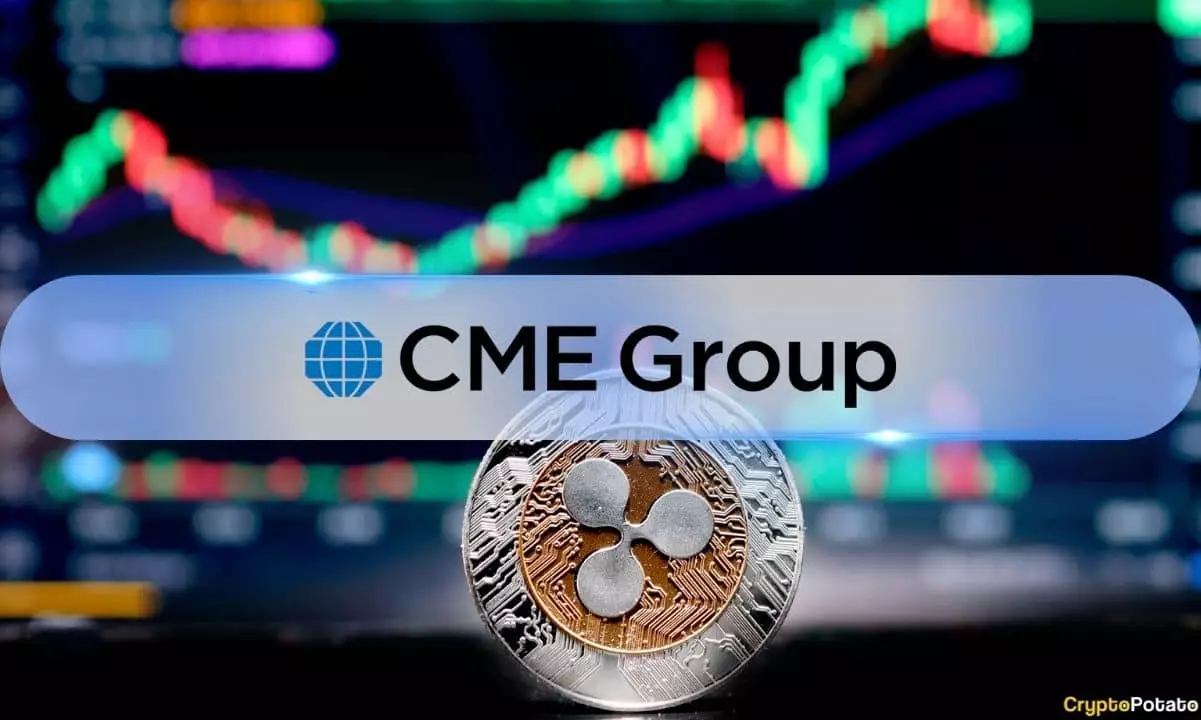The Chicago Mercantile Exchange’s (CME) announcement of launching XRP futures contracts on May 19 marks a pivotal moment in the landscape of cryptocurrency trading. This decision not only underscores the growing acceptance of digital currencies in mainstream finance but also highlights a trend towards institutional-grade offerings. With the introduction of these futures, the CME is poised to make a significant impact, following its earlier expansions into offerings for Bitcoin, Ethereum, and Solana—each a testament to the evolving nature of financial markets.
The futures contract for XRP, Ripple’s native token, provides an enticing proposition for traders. Unlike traditional asset ownership, these cash-settled contracts allow investors to speculate on XRP’s price movements without ever holding the token itself. With two distinct contract sizes—the standard contract representing 50,000 XRP and the Micro XRP futures covering 2,500—traders now have tailored advantages to fit varying risk appetites and strategies. This flexibility is crucial as it empowers a wider range of market players, from large institutions to smaller traders looking for exposure to this highly volatile digital asset.
Understanding Ripple’s Legal Woes
While the launch of these futures contracts could be perceived as a bullish signal, the context surrounding Ripple’s ongoing legal battles with the U.S. Securities and Exchange Commission (SEC) cannot be overlooked. Just days before the futures were set to launch, Judge Analisa Torres denied a motion for a $50 million settlement, indicating procedural missteps from both Ripple and the SEC. This legal turbulence has undoubtedly affected XRP’s market performance, as traders remain wary of regulatory sentiments that may further shape the cryptocurrency’s future. The judge’s prior ruling that programmatic sales of XRP do not constitute security offerings is crucial; however, the uncertainty introduced by this ongoing litigation dampens market enthusiasm.
The irony here is striking—despite the potential for institutional adoption to catalyze the market, XRP’s price reaction has been tepid at best. Over a mere 24-hour span, it experienced a decline of 1.3%, alongside a 2.6% drop over the previous week. While it holds a meager 12.1% gain for the month, this suggests the market is not wholly convinced of a swift progression beyond the legal hardships. True momentum in cryptocurrency markets often springs from confidence, and a cloud of uncertainty could stifle that confidence profoundly.
Market Implications of XRP Futures
The introduction of these futures presents an opportunity for hedging positions in an unpredictable market. Futures contracts typically attract institutional investors who seek to manage risk associated with price volatility. By offering this structured means of exposure, the CME empowers these participants to engage in strategic trading, protecting their portfolios while also capitalizing on fluctuations in XRP’s value. Nevertheless, the real test will be how these assets behave under stress—especially when regulatory concerns loom large.
Additionally, the CME’s structure for trading hours reflects their commitment to integrating XRP into existing market dynamics. The standard industry timetable with breaks and monthly listings coupled with quarterly comparisons creates familiar patterns that seasoned traders can navigate. However, entering this space requires not just financial acumen but also an awareness of the unique risks associated with crypto—an area where traditional wisdom may not always apply.
Email Communications: Transparency or Manipulation?
Finally, a point of contention emerges regarding the varied fee structures imposed on different trader types. While individual members revel in lower fees, non-members are subjected to significantly higher costs. Such structures not only create barriers for new participants but can also lead to a two-tiered market that favors those already entrenched in the system. Critics might argue that this could lead to potential manipulations or unfair advantages, complicating an already intricate landscape of crypto trading and driving further divides in market participation.
As the CME positions XRP futures as a new avenue for financial speculation, it’s imperative to watch the landscape evolve amid ongoing legal challenges and market skepticism. Though the future of XRP remains uncertain, the launch of these futures could pave the way for broader acceptance—and ultimately propel the digital currency market into its next phase.

